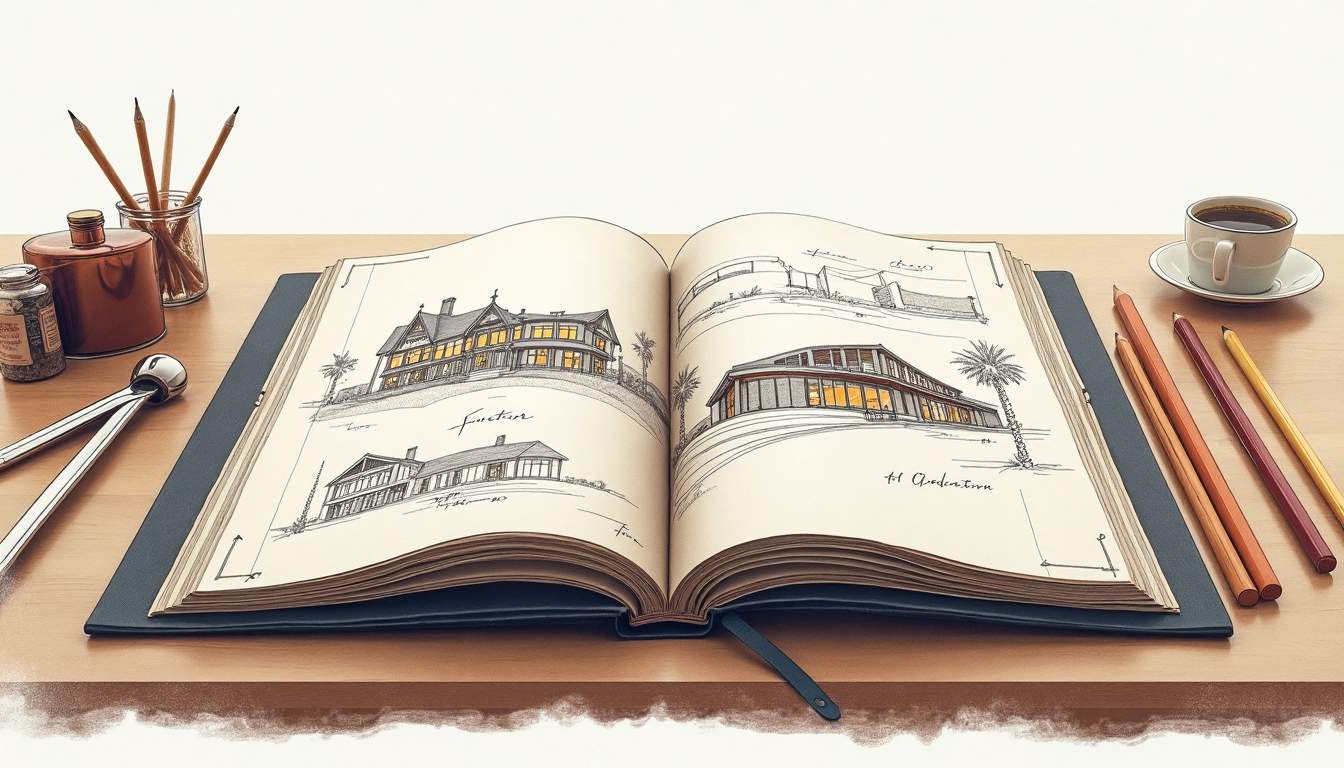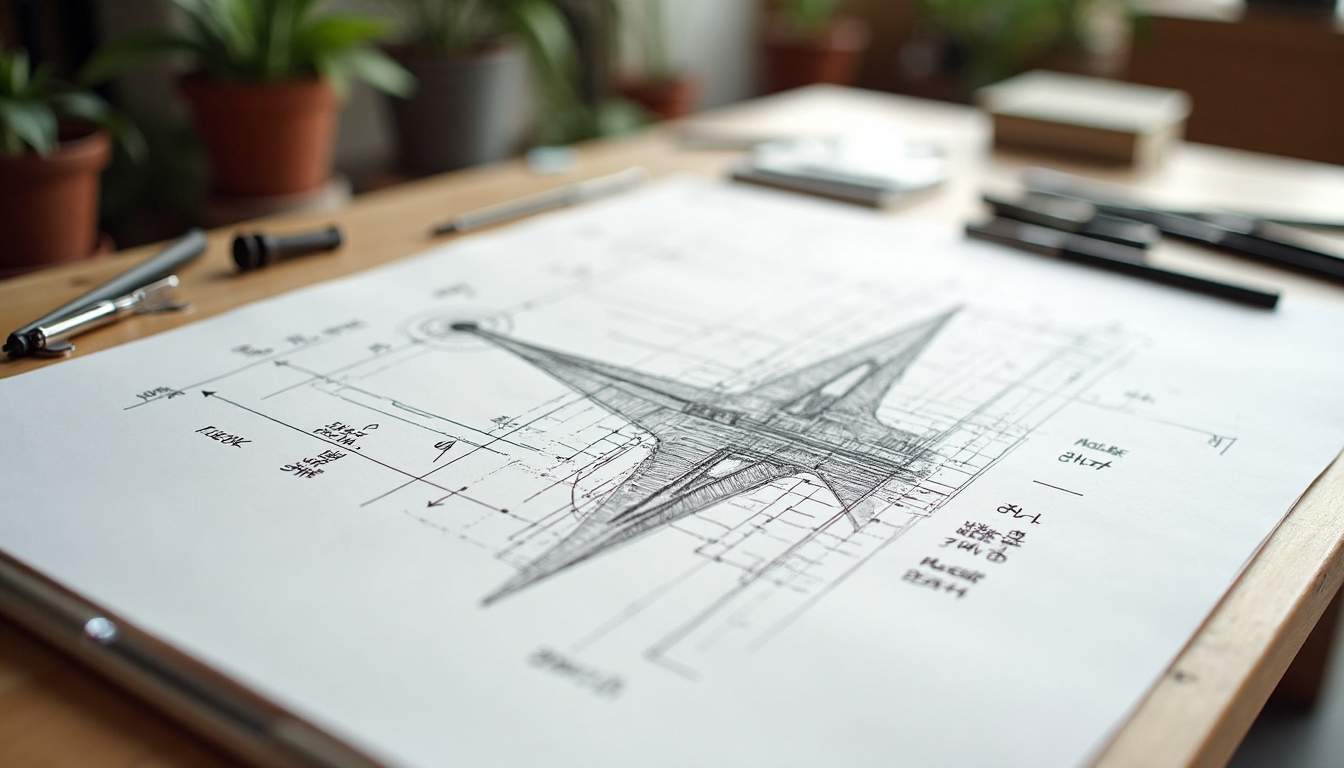
Architectural Portfolio & Presentation Drawings for Professionals
In the world of architecture, the ability to present ideas and concepts effectively is just as crucial as the design itself. An architectural portfolio serves as a visual narrative, showcasing not only completed projects but also the creative process behind them. Presentation drawings, on the other hand, are the tools that communicate these ideas to clients, stakeholders, and peers. This article delves into the importance of both portfolios and presentation drawings for professionals in the architectural field.
The Importance of an Architectural Portfolio
An architectural portfolio is more than just a collection of images; it is a curated representation of an architect’s skills, style, and vision. A well-structured portfolio can make a significant difference in securing new clients or job opportunities.
Showcasing Skills and Style
Every architect has a unique approach to design, influenced by personal experiences, education, and cultural background. A portfolio allows professionals to express their individuality through their work. By including a diverse range of projects, architects can demonstrate their versatility and adaptability to different design challenges.
Moreover, a portfolio should highlight not only completed projects but also conceptual designs and sketches. This inclusion offers insights into the architect’s creative process, showcasing the evolution of ideas from initial concepts to final designs. By presenting sketches alongside finished photographs, architects can invite viewers into their imaginative world, revealing the thought processes that underpin their work and the innovative solutions they devise to meet client needs. To explore a creative example of this approach, visit dRAW Architecture, a forward-thinking architectural and interior design studio based in South West London.
Building Credibility
In a competitive industry, credibility is paramount. A well-organized portfolio can establish trust with potential clients or employers. Including testimonials, awards, and recognitions can further enhance credibility. These elements provide social proof of the architect’s capabilities and achievements, making a strong case for their expertise.
Additionally, presenting case studies of past projects can illustrate problem-solving skills and the ability to navigate complex challenges. This not only showcases design talent but also emphasizes the architect’s strategic thinking and project management capabilities. Detailed narratives accompanying these case studies can elucidate the architect’s role in overcoming specific obstacles, such as budget constraints or site limitations, thereby providing a clearer picture of their resourcefulness and commitment to delivering quality results.
Adapting to Different Audiences
Architectural portfolios should be tailored to the intended audience. For instance, a portfolio aimed at potential clients might focus more on aesthetic appeal and completed projects, while one intended for academic purposes might emphasize design philosophy and theoretical frameworks.
Understanding the audience allows architects to select the most relevant projects and present them in a way that resonates with viewers. This adaptability can significantly enhance the effectiveness of the portfolio. Furthermore, incorporating multimedia elements, such as videos or interactive 3D models, can engage viewers more deeply, catering to the preferences of a tech-savvy audience. By embracing these modern presentation techniques, architects can elevate their portfolios, making them not only informative but also immersive experiences that leave a lasting impression.
Crafting Effective Presentation Drawings
Presentation drawings are critical tools for communicating architectural ideas. They serve as a bridge between the architect’s vision and the client’s understanding. Effective presentation drawings can inspire confidence and excitement about a project. The importance of these drawings cannot be overstated, as they often set the tone for client relationships and project approvals. A well-crafted presentation can not only clarify complex concepts but also instill a sense of trust in the architect’s capabilities.

Types of Presentation Drawings
There are several types of presentation drawings, each serving a specific purpose. Renderings, for instance, provide a realistic depiction of a project, often enhanced with colors and textures to convey the intended atmosphere. These drawings can evoke emotions and help clients visualize the final outcome. They can also highlight the interplay of light and shadow, showcasing how the building will interact with its environment throughout different times of the day.
On the other hand, diagrams and sketches can simplify complex ideas, making them more accessible. These types of drawings often focus on spatial relationships and functional aspects, allowing clients to grasp the project’s essence without getting lost in details. Furthermore, conceptual sketches can serve as a brainstorming tool, enabling architects to explore various design iterations and communicate their thought processes effectively. By presenting these early-stage ideas, architects can invite client feedback and foster a collaborative atmosphere from the outset.
Techniques for Effective Presentation
When creating presentation drawings, clarity and precision are essential. Utilizing software tools can enhance the quality of drawings, but hand-drawn elements can also add a personal touch. Combining both methods can create a unique aesthetic that reflects the architect’s style. For instance, digital renderings can be complemented with hand-drawn annotations, lending a sense of authenticity and warmth to the presentation. This blend can also help differentiate the architect’s work in a competitive market, showcasing both technical skill and creative flair.
Moreover, incorporating annotations and labels can guide viewers through the drawings, highlighting key features and design intentions. This added context can significantly improve understanding and engagement. Utilizing color coding or symbols can further enhance clarity, allowing clients to quickly identify different aspects of the design, such as materials, functions, or environmental considerations. This thoughtful approach to presentation not only aids comprehension but also demonstrates the architect’s attention to detail and commitment to client satisfaction.
Engaging the Audience
Presentation drawings should not only inform but also engage the audience. Utilizing storytelling techniques can make the presentation more compelling. By framing the project within a narrative, architects can create a connection with viewers, making the project more memorable. This narrative can include the history of the site, the inspiration behind the design, or how the project will positively impact the community. Such storytelling can transform a standard presentation into an inspiring journey, inviting clients to envision themselves within the completed space.
Interactive elements, such as 3D models or virtual reality experiences, can take engagement to another level. These technologies allow clients to explore designs in a more immersive way, providing a deeper understanding of the spatial dynamics and overall experience of the project. Additionally, incorporating augmented reality features can enable clients to visualize the project in its intended location, fostering a tangible connection to the design. This level of interactivity not only captivates the audience but also empowers them to provide informed feedback, ultimately leading to a more successful collaboration between architect and client.
Integrating Portfolio and Presentation Drawings
While architectural portfolios and presentation drawings serve different purposes, they can be integrated to create a cohesive narrative. This synergy can enhance the overall impact of both tools, making them more effective in communicating the architect’s vision.
Creating a Unified Theme
Establishing a consistent theme across both the portfolio and presentation drawings can strengthen the architect’s brand. This theme can be reflected in color schemes, typography, and overall layout. A unified aesthetic not only makes the materials more visually appealing but also reinforces the architect’s identity.
Additionally, including references to presentation drawings within the portfolio can provide context for completed projects. This approach allows potential clients to see the connection between the initial vision and the final outcome, enhancing understanding and appreciation of the work.
Utilizing Feedback for Improvement
Feedback is invaluable in the architectural profession. By soliciting input on both portfolios and presentation drawings, architects can gain insights into how their work is perceived. This feedback can guide improvements, ensuring that both tools effectively communicate the intended message.
Moreover, incorporating feedback from clients and peers can lead to more refined presentation techniques. Understanding what resonates with different audiences can help architects tailor their approach, making future presentations even more impactful.
Staying Current with Trends
The architectural field is ever-evolving, with new trends and technologies emerging regularly. Staying informed about these changes is crucial for architects looking to maintain a competitive edge. This includes being aware of advancements in software tools for creating presentation drawings, as well as shifts in design aesthetics.
Regularly updating portfolios to reflect current work and trends can also demonstrate an architect’s commitment to growth and innovation. This proactive approach can attract clients who value contemporary design and forward-thinking solutions.
Best Practices for Creating an Architectural Portfolio
Creating an effective architectural portfolio requires careful consideration and planning. Following best practices can ensure that the portfolio not only showcases work but also tells a compelling story.

Curating Content Wisely
Quality over quantity is a key principle in portfolio creation. Selecting the best projects that truly represent the architect’s skills and style is essential. Including a diverse range of work can demonstrate versatility, but it is crucial to maintain a cohesive narrative throughout.
Each project included should have a clear purpose within the portfolio. Providing context, such as project goals, challenges faced, and solutions implemented, can enhance the viewer’s understanding and appreciation of the work.
Designing for Clarity
The layout of the portfolio should prioritize clarity and ease of navigation. A clean, organized design allows viewers to focus on the work rather than being distracted by clutter. Utilizing white space effectively can enhance readability and draw attention to key elements.
Furthermore, incorporating a logical flow is vital. Organizing projects chronologically or thematically can guide viewers through the portfolio, creating a seamless experience that tells a story.
Utilizing Digital Platforms
In today’s digital age, having an online portfolio is essential. Digital platforms allow for broader reach and accessibility, enabling architects to share their work with a global audience. Additionally, online portfolios can be easily updated, ensuring that the latest projects are always showcased.
Utilizing social media and professional networks can also enhance visibility. Sharing snippets of work, behind-the-scenes processes, and engaging with followers can create a dynamic online presence that complements the portfolio.
Conclusion
Architectural portfolios and presentation drawings are fundamental tools for professionals in the field. They not only showcase design skills but also communicate ideas, engage audiences, and build credibility. By understanding the importance of each tool and implementing best practices, architects can create compelling narratives that resonate with clients and stakeholders.

As the architectural landscape continues to evolve, staying current with trends and technologies will be crucial for success. By integrating portfolios and presentation drawings effectively, architects can enhance their professional image and open doors to new opportunities. Ultimately, the ability to present ideas clearly and creatively is what sets successful architects apart in a competitive industry.